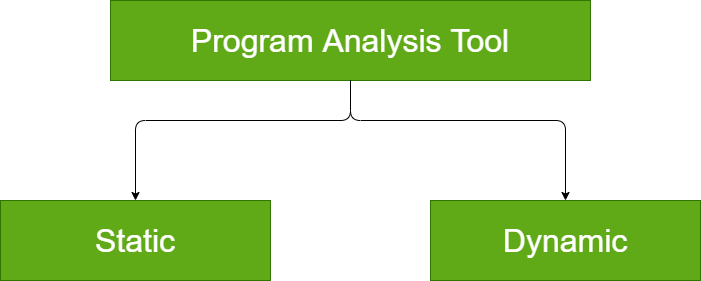
The goal of developing software that is reliable, safe and effective is crucial in the dynamic and always changing field of software development. Programme Analysis Tools are a developer’s greatest support on this trip, giving them invaluable knowledge about the inner workings of their code. In this article, we’ll learn about it’s importance and classification.
Program Analysis Tool is an automated tool whose input is the source code or the executable code of a program and the output is the observation of characteristics of the program. It gives various characteristics of the program such as its size, complexity, adequacy of commenting, adherence to programming standards and many other characteristics. These tools are essential to software engineering because they help programmers comprehend, improve and maintain software systems over the course of the whole development life cycle.
Program Analysis Tools are classified into two categories:

Static Program Analysis Tool is such a program analysis tool that evaluates and computes various characteristics of a software product without executing it. Normally, static program analysis tools analyze some structural representation of a program to reach a certain analytical conclusion. Basically some structural properties are analyzed using static program analysis tools. The structural properties that are usually analyzed are:
Code walkthroughs and code inspections are considered as static analysis methods but static program analysis tool is used to designate automated analysis tools. Hence, a compiler can be considered as a static program analysis tool.
Dynamic Program Analysis Tool is such type of program analysis tool that require the program to be executed and its actual behavior to be observed. A dynamic program analyzer basically implements the code. It adds additional statements in the source code to collect the traces of program execution. When the code is executed, it allows us to observe the behavior of the software for different test cases. Once the software is tested and its behavior is observed, the dynamic program analysis tool performs a post execution analysis and produces reports which describe the structural coverage that has been achieved by the complete testing process for the program.
For example, the post execution dynamic analysis report may provide data on extent statement, branch and path coverage achieved. The results of dynamic program analysis tools are in the form of a histogram or a pie chart. It describes the structural coverage obtained for different modules of the program. The output of a dynamic program analysis tool can be stored and printed easily and provides evidence that complete testing has been done. The result of dynamic analysis is the extent of testing performed as white box testing. If the testing result is not satisfactory then more test cases are designed and added to the test scenario. Also dynamic analysis helps in elimination of redundant test cases.